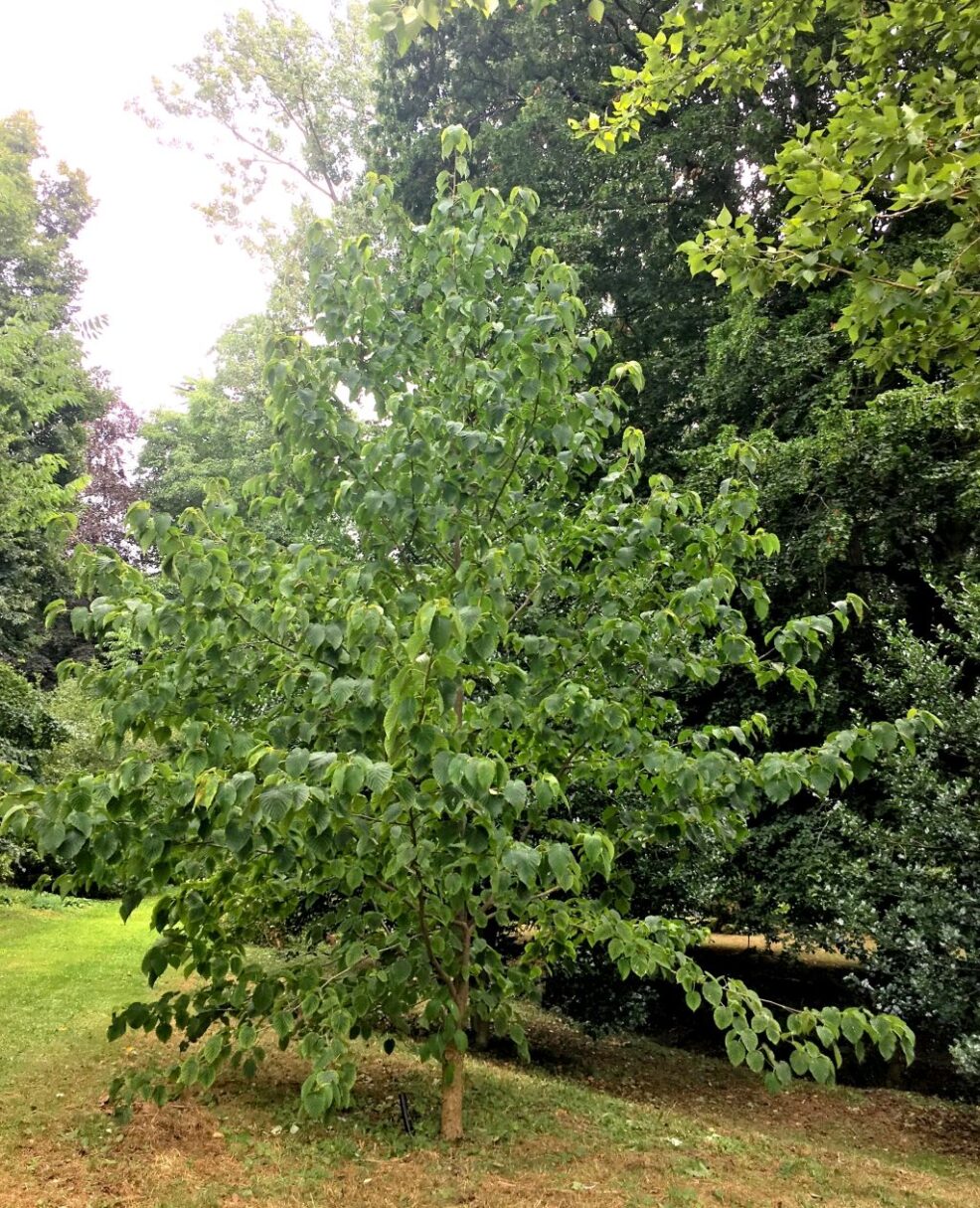#447 (N16) HANDKERCHIEF TREE
Davidia involucrata var. vilmoriniana

Planted: 2008
View On MapThis tree can be found at the W end of the Central Path.
| Distribution: | Endangered species in high altitude cloud forests in western China. Common in in large gardens and parks, in temperate regions. |
| Planting Date: | August 2008 – supplied by Royal Horticultural Society Garden, Wisley, Surrey |
| Growth Habit: | Conic, broad-domed, or multi-stemmed |
| Bark: | Orange brown beneath scaly flakes |
| Leaf: | Shiny crimson buds open to elegant, sharply-toothed, heart shaped leaves, hairless beneath, with sunken veins. Easily blighted by frost or drought. |
| Flowers: | Paper thin white bracts unfold in late spring on mature trees – they hang in spectacular tiers. The flowers are small and inconspicuous. |
| Fruit: | Dense globular and pear-like, the 2.5 cm fruits ripen to purple-brown and stay on the tree to late winter. Edible when overripe. |
| Potential tree size | 24 m |
| Uses: | Ornamental tree – grown for display of white bracts. |
| Plant Hunter: | First discovered in 1869, in the high altitude cloud forests of central and western China, by the French missionary Père David. He described the tree and sent herbarium specimens back to Europe. Wilson is sent to collect seed in April 1900 and discovers that the tree has been cut down. He finds other trees and returns to Veitch Nurseries, Exeter, Devon, with seed in 1901, by which time seeds collected in 1897 by Abbe Paul Guillaume Farges, have already flowered at Vilmorin, Andrieux & Co, Paris, thus depriving the Veitch Nursery of the claim. |
| Introduction Date: | 1901 in Paris from seed collected by Abbe Farges. |
| Anecdotes and Comments | Planted in memory of Miss Angela Maidwell, former headmistress at Robert Smyth, and enthusiastic fan of the Arboretum. Alternative name: Dove Tree Plants can take 15 to 20 years to be mature enough to produce bracts. But, some trees never do. |